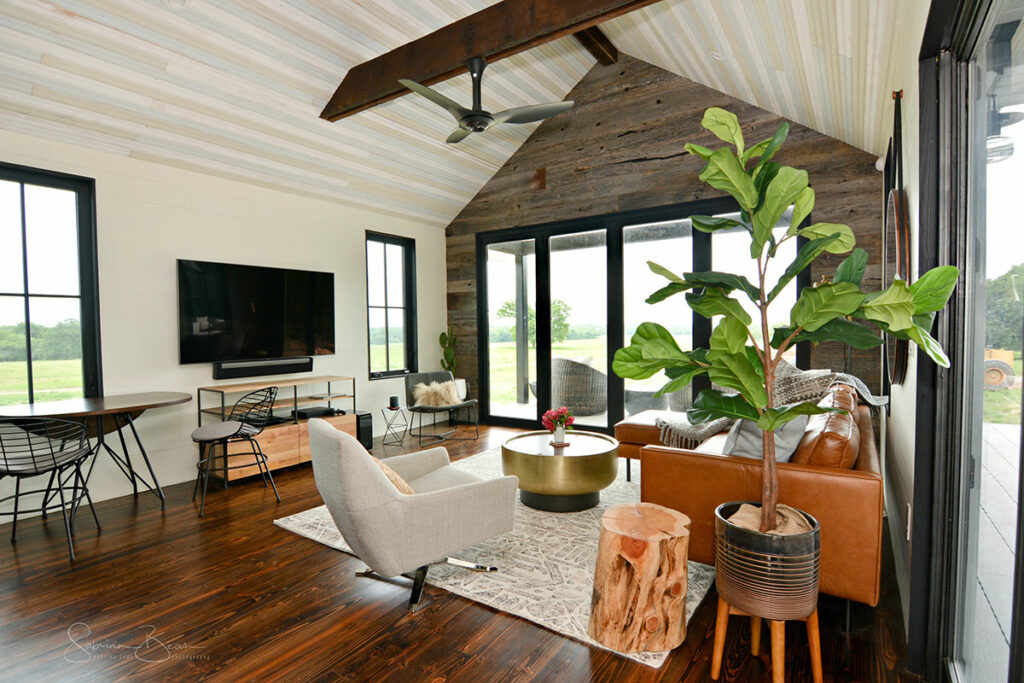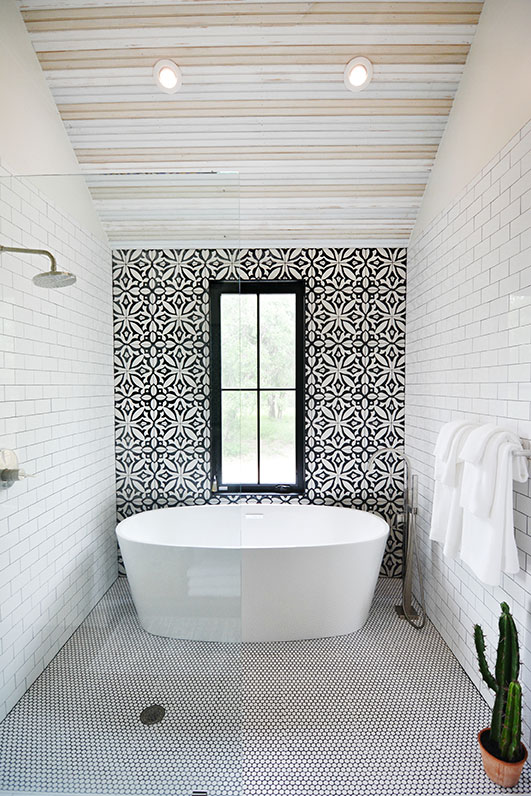Tracen Gardner is an environmentally conscious builder of sustainable, modular living spaces built from salvaged historic barn wood and corrugated metal. Plans for each of his clients are individually drawn out and, once agreed upon, are built in his Lockhart warehouse facility and shipped to the client’s final location. Reclaimed Space began in 2007 and its concept is simple: To build a sustainable, modular structure that is in harmony with the natural world and to reverse the impact the new building industry is having on our environment.

R&V: What was the initial inspiration that led you to develop Reclaimed Space and its objective for sustainable building?
TG: It came from when I was attending a boarding school in Arizona and we visited the Arcosanti community. Paolo Soleri was an Italian architect that started his dream in the 1960s about sustainable living that utilized geothermal cooling and heating mechanisms. Along with environmental compatibility and passive solar, he used other really advanced systems that I thought were so cool.
R&V: What has to be considered to ensure environmental compatibility when planning and building a modular home?
TG: I do things the way the first settlers did and look to seasons for the variables, and compatibility with the environment is a key component in all of our builds. I usually walk a property and look at the north and south positions, and plan for cross ventilation with window positioning. Roof lines are important for catching water and harnessing solar. The materials are also a critical component in building sustainably as well as building in a controlled environment.

RV: What are your ideal materials and why is building in a controlled environment important?
TG: Solid hardwood is like gold. It was used prolifically before WWII – anything built prior to 1940 is what we try to salvage and this is typically long-leaf pine which we use for our trim, flooring and wall materials, as well as chestnut from barns in Kentucky and we get Cypress wood from old farm homes and barns . By reusing these pre-1940 materials, I can build a home free of pesticides and sheet rock. Every home we are building is the way we would like to find a home if we were going to take it apart.
Building our modular homes in a warehouse provides protection from the weather, reduces litter and your carbon footprint is vastly reduced as there is no need to for lengthy drives to site visits by numerous people. We are also trying to use solar charged equipment to accomplish all our power needs. You just can’t get any more sustainable that that.

RV: What challenges do you face in building sustainably?
TG: When we began in 2007, there were only a few people doing smaller, modular, pre-fab building. It was costly. I came from a mindset that everything is a project, so if you’re building a house, how do you make it transportable so it can be moved anytime. Nowadays, builders don’t look at orientation of a property when they are building on lots – the building industry just asks how may houses can we fit into a neighborhood. The packaging utilized in each new home build is also a waste. It’s from understanding these challenges and having a need for my own place that I came up with this all-around idea of how to build sustainably and more cost effectively.
RV: You have manifested some of your dreams stemming from your youth when you visited the ArcoSanti community and began your own pioneering endeavor with Reclaimed Space. What’s next on your list?
TG: It’s funny you should ask this because I have been thinking about it a lot. I am actually going back to Arcosanti to build out on a pavilion. Goals are important to write down and to talk about. I am exploring other building techniques as well as building and designing larger homes and barns. I am outfitting an entire ranch and would like to do a small hotel. We are only limited by our own dreams and our budgets!


